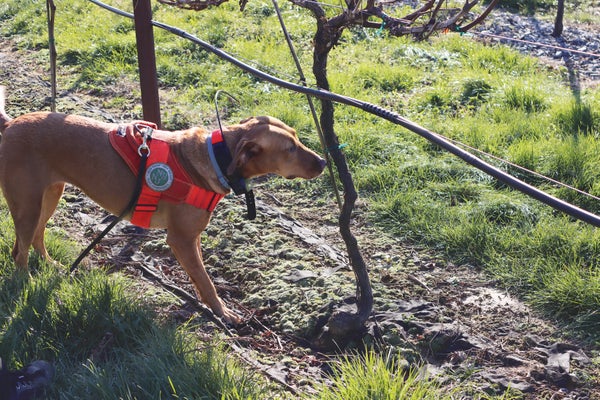From sniffing out rare species to tracking down poachers, dogs aid conservation efforts in a surprising variety of ways. And a growing list of successes shows how our best friends’ legendary noses can be an especially powerful weapon in the battle against invasive organisms. Lately dogs have proved to be particularly useful allies against one infamously unwelcome guest: spotted lanternflies.
Native to Asia, these insects were seen in Pennsylvania in 2014 and soon spread across the eastern and central U.S. The species is especially threatening to vineyards, as it can severely damage grapevines over time.
“Once it’s spread into a new area, getting rid of that infestation early on is really important,” says Angela K. Fuller, an ecologist at Cornell University. But that also means finding and destroying spotted lanternfly egg masses, whose light-brown, dirtlike camouflage makes them extremely difficult to see.
On supporting science journalism
If you're enjoying this article, consider supporting our award-winning journalism by subscribing. By purchasing a subscription you are helping to ensure the future of impactful stories about the discoveries and ideas shaping our world today.
For a recent study in Ecosphere, Fuller and her team pitted dogs against humans at finding spotted lanternfly eggs in various scenarios. The researchers spent several months training a Labrador retriever and a Belgian Malinois to find the eggs, and then they set the dogs to work in 20 Pennsylvania and New Jersey vineyards. Humans did better within the vineyards, where they could search systematically up and down the vines—but the dogs detected over three times more egg masses in nearby forested areas. Fuller suggests that dogs could also be more effective in vineyards with lower-level infestations, catching the scent in large areas that would be too time-consuming for humans to search.
“I think it is a very nice and thorough study,” says Nathaniel Hall, an animal behaviorist at Texas Tech University who studies dogs’ sense of smell and was not involved in the research. “It is helping lay the groundwork for use.”
According to Ngaio Richards, a canine handler and forensic ecologist at the University of Florida and at Working Dogs for Conservation, this is an ever expanding field of research—and practical use. “Worldwide, detection dog teams are being integrated into efforts to deter, monitor and combat the presence of invasive species,” she says, from insects and plants to fish and mammals.
In North America, trained dogs inspect watercraft to detect invasive mussels before they catch a ride to new waters. Dogs have also been tested at finding longhorn beetles, brook trout and nutria. In Montana, dogs identify dyer’s woad, an invasive plant that can harm native vegetation and is hard for humans to detect during parts of its life cycle.
“Dogs tend to be an excellent real-time detector that is hard to match,” Hall says. “I think there is an untapped capacity for broader use.”

